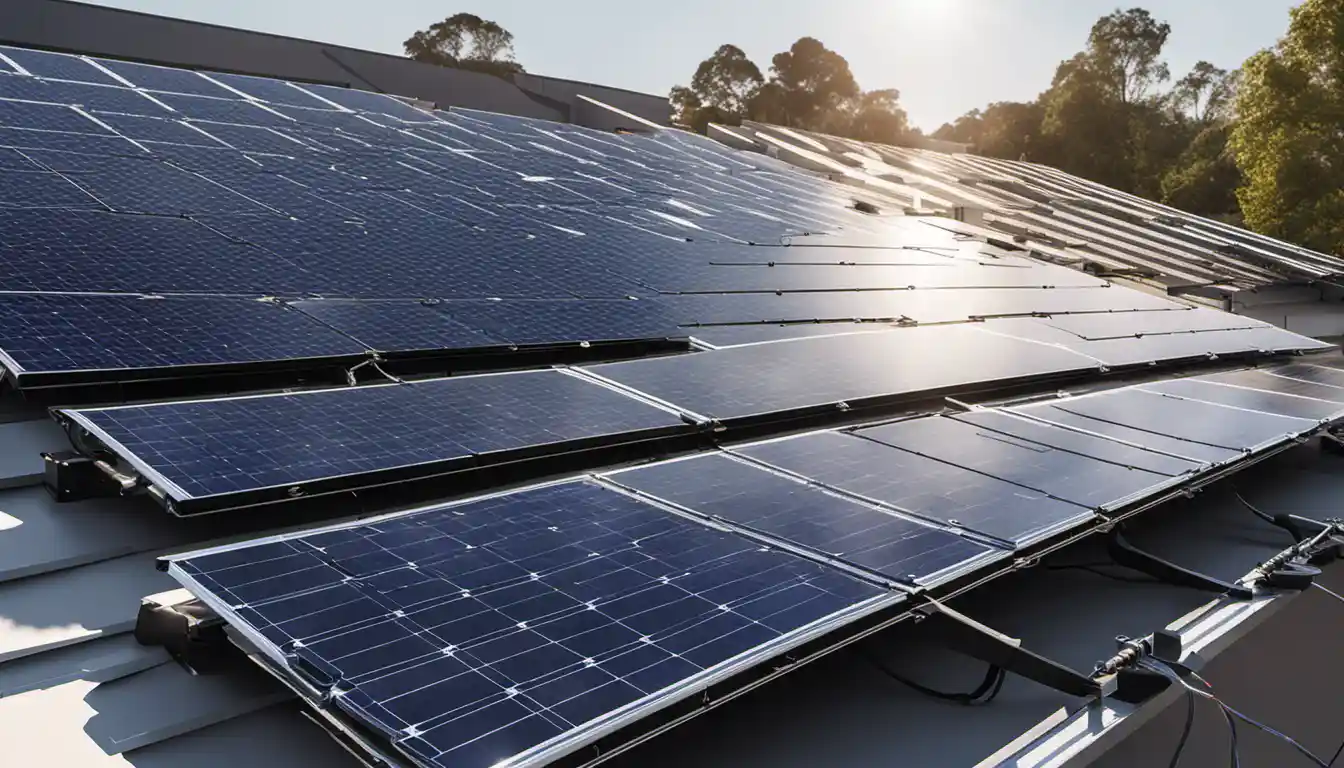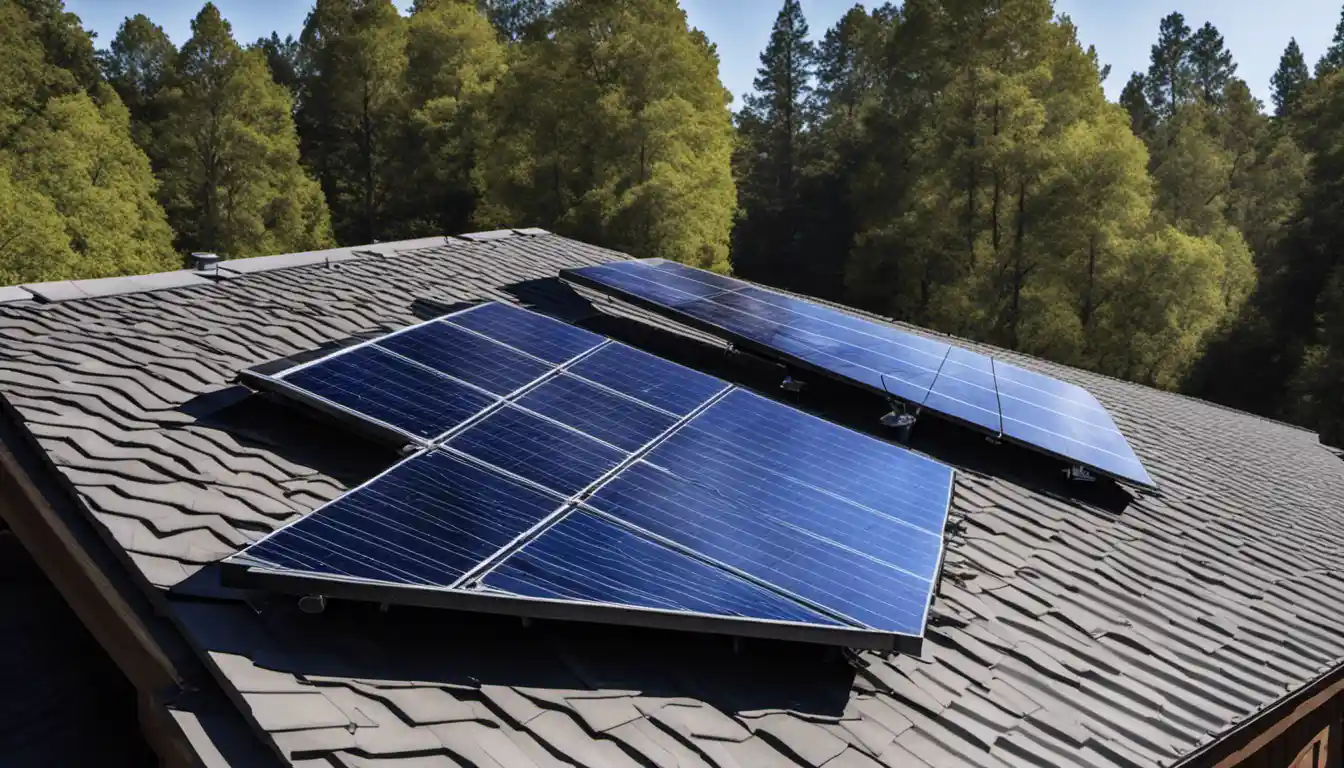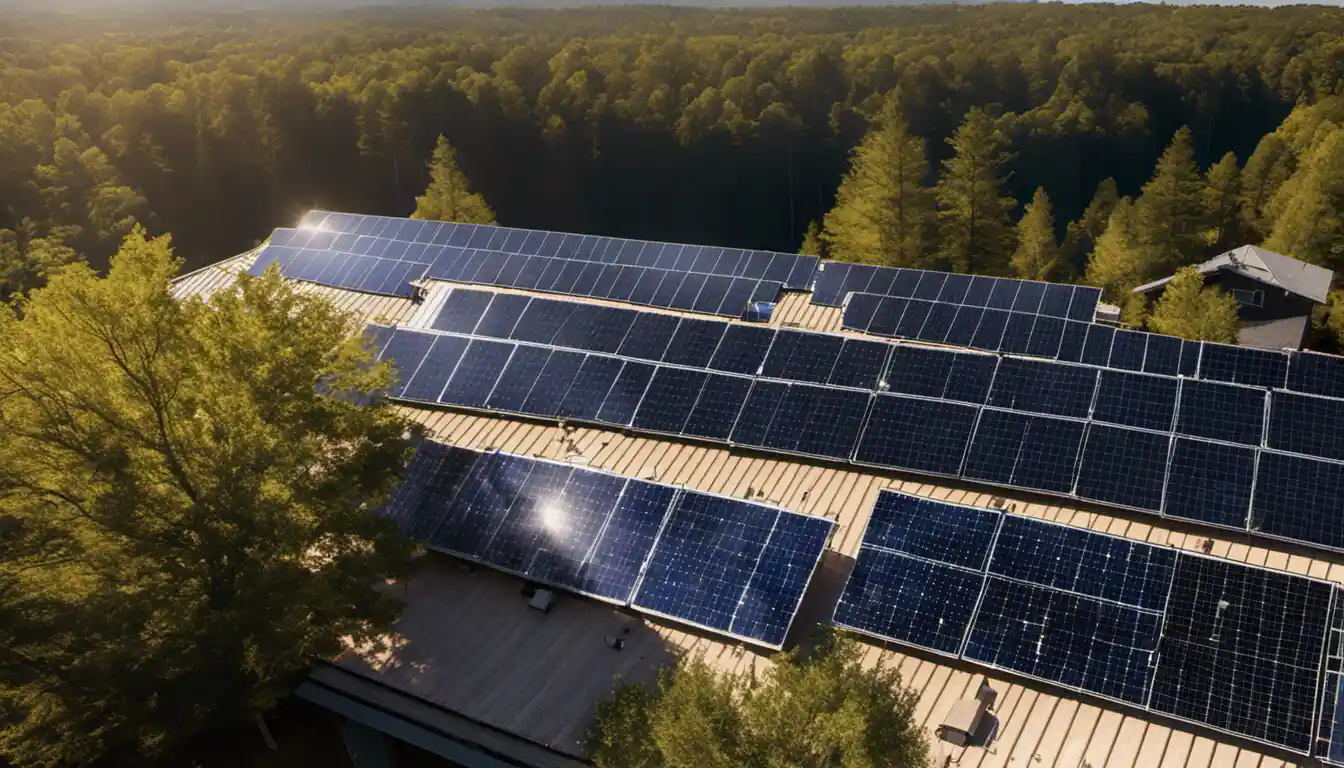Understanding Solar Inverters
Micro inverters and string inverters are both types of inverters used in solar power systems. Micro inverters work on a module-level, converting direct current (DC) to alternating current (AC) for each individual solar panel, making them more efficient and durable. In contrast, string inverters are connected to a series or ‘string’ of solar panels, converting their total power output from DC to AC, and are generally less expensive.
What is a String Inverter?
Picture a wide river. A string inverter works much like a dam across such a river, harnessing the power of the water’s collective flow. Simply put, a string inverter takes the DC power generated by a series – or ‘string’ – of solar panels, and converts it into AC power that your home or business can use. The common practice is to connect 6 to 10 panels in a string, and each string feeds into a single string inverter.
String Inverter Pros and Cons
Pros of using string inverters include their lower upfront cost and their longer-established history in solar installations, which can offer a greater sense of reliability. Also, because all the solar panels are connected, the system is quite easy to monitor.
Conversely, one disadvantage is that if one panel underperforms or encounters issues (like shading), the entire string’s performance is affected – it’s a bit like having a runner in a relay race suddenly develop a bad knee. Furthermore, these inverters usually require a dedicated wall space for outdoor or indoor installation.
String inverter vs Power Optimizer
Now, consider a hybrid between a micro inverter and string inverter – that’s where a power optimizer comes into play. Power optimizers are installed at the site of each individual solar panel, like a micro inverter, but they don’t convert DC to AC right away. Instead, they ‘optimize’ the DC power before sending it to a string inverter.
While power optimizers share some benefits with micro inverters – such as minimizing the impact of a shaded or underperforming panel – they balance those against the benefits of a string inverter, like cost-effectiveness.
What is a Microinverter?

Switching gears, a micro inverter operates more like multiple mini dams situated along smaller branches of a river. Instead of being placed between a string of panels, micro inverters are installed beneath each individual solar panel. They convert the DC power to AC power at the panel level, which optimizes the output of each individual panel.
Microinverter Pros and Cons
The major advantage of using micro inverters is the ability to maximize solar output since each panel’s performance doesn’t affect the others. Folks, imagine a broken string of fairy lights where one faulty bulb puts out the whole string. Well, that’s not an issue with micro inverters. Even if one panel is shaded or underperforming, the others continue to deliver their best power output. Plus, their placement beneath each panel provides easy access for maintenance.
Then again, micro inverters have a higher upfront cost compared to string inverters and are relatively newer to the market, so some may have reservations regarding their reliability due to a shorter market history.
Comparison Between String Inverter and Microinverter
Efficiency: Microinverter vs String Inverter
When it comes to a face-off in efficiency between the micro inverter vs the string inverter, the micro inverter takes the cake. They excel in optimizing the efficiency of each panel individually, especially in less ideal conditions such as partial shading or dirt on the panels. String inverters, in contrast, operate at the level of the lowest performing panel, impacting the overall system’s efficiency.
Cost: Microinverter vs String Inverter
Looking at costs, string inverters, being a more mature technology, generally come out as less expensive. The average cost differential can be 10-20%, sometimes more, depending on the specifics of the solar installation. While micro inverters may have a higher upfront cost, they may offer better long-term value, with sustained performance and lower maintenance requirements.
Suitability for Challenging Installation Conditions

Solar installations are not all created equal. From roof angles to shading, many factors can impact effectiveness. Here, the round might go to micro inverters that handle challenging conditions well, since they optimize each panel’s output individually. Remember, in string inverters, one weakly performing panel can reduce the entire string’s effectiveness.
Ease of System Expansion: Micro vs String
Planning to expand your solar system down the line? Micro inverters gain the upper hand here. With string inverters, expansion can be complex since additional panels need to be compatible in voltage with the original panels. Micro inverters, however, make it easy to add panels one by one.
Lifespan & Maintenance: Microinverters vs String inverters
In the duel of lifespan and maintenance, microinverters generally boast a longer lifespan and lower maintenance needs. Most come with 25-year warranties, indicating their durability. String inverters, while cheaper upfront, may need replacement within 10-15 years.
Choosing the Right Inverter for Your Solar System
Choosing between a micro inverter, string inverter, or power optimizer hinges on your specific needs and circumstances. Factors like the size and layout of your installation, future expansion plans, and local weather conditions should inform your choice.
Evaluating Location, Scale, and Goals for Your Solar System

Take these into account: Is your site partially shaded? A micro inverter or power optimizer could be beneficial. Is your budget tight? A string inverter might be more cost-effective. Weighing your particular situation against the strengths and weaknesses of each option will help you make an informed decision.
Making an Informed Choice: Microinverter, String Inverter or Power Optimizer?
Each inverter type has its own strengths and trade-offs. Decisions regarding micro inverter vs string inverter come down to the specifics of your project and personal preferences. For an investment that lasts decades, this choice warrants careful consideration. I recommend consulting an experienced solar professional or provider for personalized advice.
Check out our comprehensive guide on types of solar inverters to explore more about their functions, comparisons, and advancements.
Final Considerations
Solar power technology is continually advancing. The debate on “micro inverter vs string inverter” is not static and continues to evolve with opportunities for array configuration, monitoring options, and pricing.
Solar Inverters: The Next Generation
Emerging now are High Frequency Isolated Converters, which promise the best of both worlds: the small size and scalability of micro inverters with the cost-effectiveness, robustness and lifespan of string inverters. We’ll keep you updated as the technology matures.
What’s on the Horizon: Emerging Technology & Trends in Solar Inverters
In the string inverter vs microinverter vs power optimizer debate, the winner could change as new technologies emerge. There’s loads to look forward to as we keep a keen eye on this evolving domain.
Stay tuned, and remember – the best solar technology is the one that makes the most sense for you today. Making this decision with a clear understanding of your needs and the options available ensures your solar journey is as bright as our sun!



